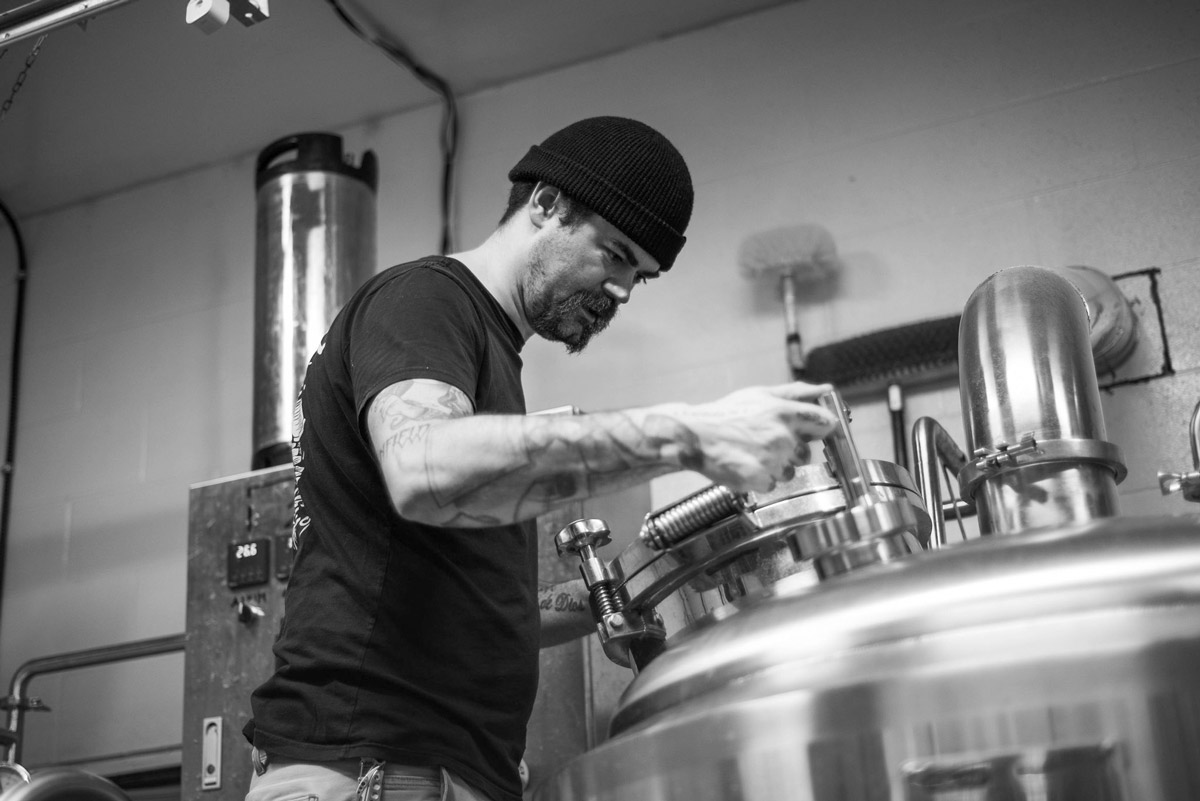An exploration of Norwegian farmhouse yeast

It all started with a blog post.
The year was 2014, and in the backwaters of the Internet, a software engineer from Norway by the name of Lars Marius Garshol was posting about archaic brewing techniques. Garshol is a beer nerd’s beer nerd. An obsessive whose love for the traditional farmhouse ales of Northern Europe led him to visit obscure, rural farms all over the continent in search of lost beer styles and methods being kept alive by farmers brewing family recipes handed down over hundreds of years.
On June 22, 2014, Garshol posted about a fascinating new yeast he had discovered on one such trip to rural Norway. There, just outside the town of Voss, he met the Gjernes family who had been brewing beer on equipment dating back to the 18th century using the family’s local yeast strain for generations. As Garshol soon discovered, this farmhouse yeast, or kveik (pronounced “kuh-VIKE”, by the way) was unlike anything he, or anyone in the beer world, had ever seen before.
Firstly, the strain was incredibly aromatic, with notes of citrus, tropical fruit and spice. As Garshol noted, “Ask yourself how many really aromatic yeast types there really are. There’s hefeweizen yeast, obviously. There’s Brettanomyces. And there’s… there’s… there’s actually not a whole lot else.”
Secondly, it fermented at incredibly high temperatures, over 40ºC, without producing any off flavours. Traditional brewing yeast typically produces off flavours above 25ºC, making temperature control critical.
And perhaps most importantly, at least to commercial brewers, it worked fast. Kveik can ferment out completely in just a few days, instead of one-to-two weeks for traditional brewing yeast.
A DNA analysis showed that the Voss kveik strain was distantly related to traditional brewing yeast, Saccharomyces cerevisiae, but was a hybrid with a local wild strain of yeast. Subsequent yeast samples from nearby farming valleys in Norway have yielded similar strains, but so far kveik seems to be limited to the southwestern corner of the country.
Within weeks of Garshol’s blog post, brewers all around the world were clamouring for a sample of this miracle yeast. Thanks to samples taken by Garshol, yeast laboratories around the world began isolating and producing kveik commercially, and the kveik revolution was underway.

“Thanks to the work of Lars Garshol who put in the legwork to find these farmhouses and sample their yeasts, we now have the ability to brew with them across the globe,” says Brad Tomlinson, brewer and owner of Jackknife brewing in Kelowna. Tomlinson has become so enamoured with kveik, not only has he made it his house yeast for Jackknife, it’s literally the only yeast he brews with.
“I really enjoy that these strains collected out of Northern Europe each have their own specific sense of place,” says Tomlinson. “Building a brewery in the Okanagan Valley where I grew up, I was really focused on terroir and working with the ingredients from the forests that I’ve spent so much time in. Nordic brewing traditions really play heavily into what I do here, especially with wood fermentation. I have yeast cultures here that I specifically leave in barrels and only use for wood fermentation and aging. Currently, I have about 12 kveik strains on the go, as well as a few proprietary blends that I’ve been molding into new beasts.”
The speed at which kveik ferments is revolutionary, says Tomlinson, and has the power to completely change the economics of craft beer.
“I’ve turned clean crisp beer around from grain to glass in five days,” he says. “Five friggin’ days! It’s nuts. This alone allows for way more flexibility in my production schedule. Lots of people are using it for this alone and are not even really advertising it. The wide range of these yeasts and their ability to ferment so quickly and cleanly without traditional off flavours is next level for production brewers. I could see this becoming a more commonly used yeast variant in the future as more and more brewers experiment with them.”
To be clear, kveik is a type of yeast, not a beer style. If you see a “Norwegian Farmhouse Ale” at your local craft brewery, you can expect it to be fermented with kveik. But don’t be surprised if your West Coast IPA or hazy pale ale is brewed with it, too.
Tomlinson, though, likes to keep things traditional.
“If you want to replicate classic styles, certain kveik strains can work just fine,” he says. “But what I like to do is lean into the strain’s natural characteristics and explore their traditional use. Some strains are cultivated in regions that only brew raw ales, or regions that bake their mashes, creating new complexities and layers to the flavour of the finished beer. These yeasts were born out of the use of these techniques, and so I really try to experiment with these techniques while combining a more West Coast flavour profile.”
Given the versatility, resilience and speed of kveik, it’s no wonder B.C. craft breweries have fallen in love with this once obscure yeast. At this rate, kveik may even replace Saccharomyces as the standard brewing yeast someday. And you can bet the macros are already experimenting with kveik to develop even cheaper lagers. Who knows, they might even succeed in accidentally making their beers delicious.




